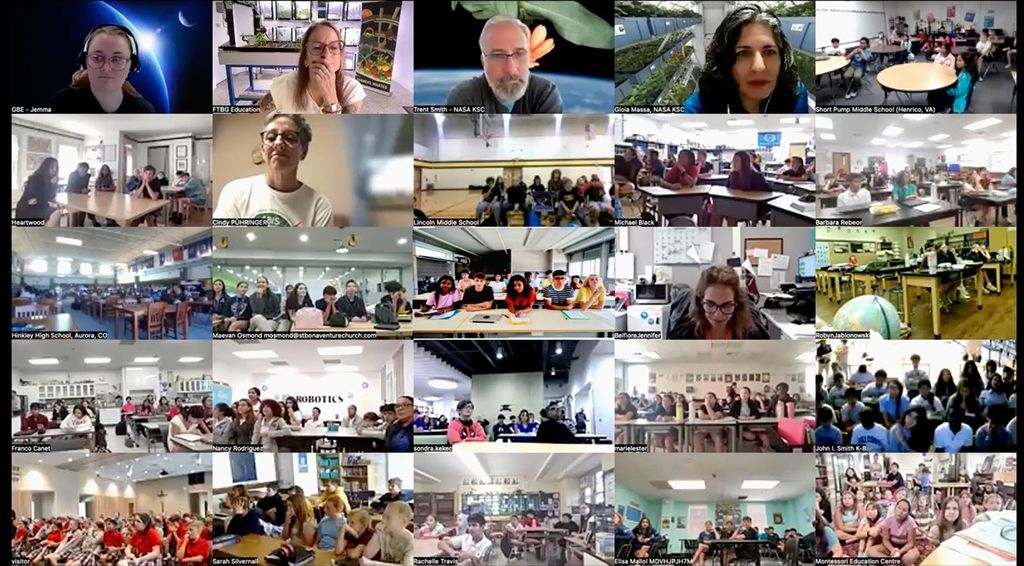Community Announcement NNH18ZDA008L: 2018 Heliophysics Technology Demonstration Mission of Opportunity via SALMON-3
NASA’s Science Mission Directorate (SMD) intends to release a Third Stand Alone Missions of Opportunity Notice (SALMON-3) Program Element Appendix (PEA) for the 2018 Heliophysics Technology Demonstration (TechDemo) Mission of Opportunity (MO) by June 2018. A draft version of the PEA will be released for community comment by May 2018. The Heliophysics Division conducts Principal Investigator (PI)-led investigations in SMD’s Heliophysics programs under a not-to-exceed cost cap. Evaluation and down-selection for flight will nominally be made through a two-step competitive process. It is anticipated that no more than three TechDemo investigations will be selected for nine-month, $400K (Real Year) Phase A concept studies through this AO. At the conclusion of these concept studies, it is planned that at least one TechDemo investigation will be selected to continue into Phase B and subsequent mission phases. A TechDemo investigation proposed PI-Managed Mission Cost (PIMMC), including all mission phases, is expected to range from $25M-$65M. Multiple missions may be selected if their total cost remains below the overall PEA Cost Cap of $65M. TechDemo investigations will launch on the Interstellar Mapping and Acceleration Probe (IMAP) Evolved Expendable Launch Vehicle (EELV).
The TechDemo PEA solicits Small Complete Mission (SCM) proposals for spaceflight demonstration of innovative medium Technical Readiness Level (mid-TRL) technologies that enable significant advances in NASA’s Heliophysics Scientific Objectives and Goals as described in 2014 Science Plan for NASA’s Science Mission Directorate and Our Dynamic Space Environment: Heliophysics Science and Technology Roadmap for 2014-2033. Consistent with these objectives and goals, investigations should focus on technology that will enable compelling advances in the research science of understanding the Sun and its interactions with Earth and the Solar System.
TechDemo investigations must be proposed for flight as a secondary payload with the IMAP mission. Up to two ports on an EELV Secondary Payload Adapter (ESPA) will be provided to accommodate this investigation. The ESPA is intended to be an unpowered, non-propulsive, ESPA Grande ring. The TechDemo SCM(s) will be released from the ESPA and/or the IMAP EELV after IMAP injection into a transfer orbit to the Earth-Sun L1 Lagrangian point.
Proposal merit in this PEA will be determined by the magnitude of heliophysics science advancements enabled by the proposed TechDemo investigation. The timeframe to initiate a future research mission achieving the science advancements enabled by the TechDemo investigation must be technically and scientifically plausible during the next 15 years. The TechDemo investigation might inform the research mission recommendations of the next heliophysics decadal study by raising the TRL of a key technology from below 5 to the point it is no longer considered a defining risk to those missions. However, science advancements can also be achieved within the TechDemo investigation itself. Whether the targeted science advancement is achieved during the TechDemo mission, or during some future mission within the specified timeframe, will not be a factor in the evaluation criteria.
It is anticipated that this opportunity will solicit proposals for investigations requiring the development and operation of space-based investigations. The projects are designated as Category 3 as defined in NPR 7120.5E, NASA Space Flight Program and Project Management Requirements. The payloads are designated as Class D as defined in NPR 8705.4 with allowable application and changes of processess specified in the new NASA Science Mission (SMD) Class-D Tailoring/Streamlining Decision Memorandum. See https://soma.larc.nasa.gov/standardao/ClassD.html.
As NASA expects investigations proposed to this solicitation to require more development than in non-technology demonstration solicitations, proposals may spend up to 30% of the PIMMC prior to KDP-C. In each investigation, a 30% minimum unencumbered cost reserve on Phases A-D and a 20% minimum unencumbered cost reserve on Phases E-F will be required within the the proposed PIMMC.
The time frame for the solicitation is intended to be:
Release of Draft SALMON-3 PEA May 2018 (target)
Release of Final SALMON-3 PEA June 2018 (target)
Pre-proposal conference 2-3 weeks after Final PEA release
Mandatory Notification Proposals 30 days after Final PEA release
Proposals due 90 days after Final PEA release
Selection for competitive Phase A studies Second Quarter FY 2019 (target)
Concept Study Reports due First Quarter FY 2020 (target)
Down-selection Third Quarter FY 2020 (target)
Launch readiness date NLT December 2024
NASA has not approved the issuance of the 2018 Heliophysics Technology Demonstration Mission of Opportunity SALMON-3 PEA and this notification does not obligate NASA to issue the SALMON-3 PEA and solicit proposals. Any costs incurred by prospective investigators in preparing submissions in response to this notification or the planned 2018 Heliophysics Technology Demonstration Mission of Opportunity SALMON-3 PEA are incurred completely at the submitter’s own risk.
Further information will be posted on the 2018 Heliophysics Technology Demonstration Mission of Opportunity Acquisition Homepage at https://soma.larc.nasa.gov/stp/tdmo/ as it becomes available. Questions may be addressed to Dr. Roshanak Hakimzadeh, Heliophysics TechDemo MO Lead Scientist, Science Mission Directorate, NASA, Washington, DC 20546; Email: hq-techdemo@mail.nasa.gov.
































